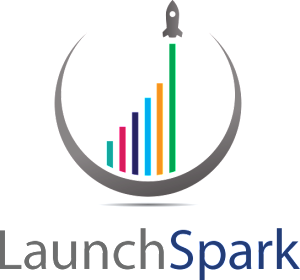
How To Source A Voiceover, and From Where
Making your own explainer video? Doing your own voiceover to save on costs with an animation agency? I’ll get right to the point — don’t do it yourself. Yes you. No matter how many people have told you that you have a great voice, leave it to the pros — with the number of voiceover artists using a pro studio, and available to turn projects around quickly, there’s no reason not to.
First I’ll take you through some simple instructions on guiding your artist, and then talk you through where to go for the talent.
Artist Guidelines
Voiceover artists have a range of projects they work on, and all of them need a different style, so a little bit of guidance goes a long way. First of all, tell them the personality of your company: professional / enterprise; fun / playful; casual / informal; etc. This will set the tone and style for the read. Next up, I recommend that all explainer videos should have a natural and conversational style; voiceovers tend to sound rather formal when the artist isn’t given this advice, and your audience will relate more to someone that’s speaking to them naturally. When it sounds fabricated, it sounds like a sales pitch, and people will quickly tune out.
Next, make sure you specify that your project may require revisions for tone, pace or style, and that these revisions are included in the project price (not extra). If you change the script at all, the industry standard is to have to pay the artist again (we’ve found that many charge 50% of the original project price, while some are nice enough to do small changes for free). Also let your artist know that you’re looking for a 24-hour turnaround for the initial read, and any re-reads. Most don’t have a problem with this.
Lastly, mention what you’re looking for in an artist — language, gender and accent. On most platforms, you can specify this and receive auditions only from artists that match that criteria.
Where To Source a Voiceover From
The next thing to think about is where to source your voiceover from; there’s a range of options out there with varying price and quality. I’ll take you through the best resources, and list according to price.
Fiverr ($5): Fiverr is a place where people can offer any service for $5, and many voiceover artists come here. Just search for “voiceover”, and you can begin to peruse. The downside with Fiverr is that it’s not specifically a voiceover site, so the search for an artist is more manual — you have to click on each artist’s offering to hear their sample. Once you’ve selected an artist, hire them, give them the instructions and the final script, and you should have something back in 2-3 days on average. Another big downside is that many of these artists aren’t professional and their voiceovers aren’t as clear and quality as those from other sites — so make sure to listen to samples and view feedback.
Pros: $5!
Cons: More of a manual search for artists; slightly longer turnaround times; quality isn’t as consistently high as on other sites
VoiceBunny ($8+): We haven’t used VoiceBunny yet, but it’s high up on our list. The interface looks great, the artist selection looks good, the prices are very reasonable, and you get to choose between having them choose the artist for you ($8+), book from their available artists ($8+), or to post a casting call ($35+). These 3 options bring a mix from what other sites offer. We’ll be using this site soon.
Pros: Great prices ($8+); best website interface of all the options; 3 options for how to choose an artist
Cons: None that we’ve seen yet (although we haven’t used the site yet)
Elance (Name Your Price): Elance is essentially an RFP site — you post what you’re looking for, and people bid to win the job. Since it’s such a well known site, there are lots of artists there… and competition tends to bring prices down. A $50 posting on Elance is likely to bring in 30+ bids, with a range of quality. The downside is that you have to open each audio clip in a new window (kind of tedious).
Pros: Name your price; lots of artists will bid on your project
Cons: It’s not a dedicated voiceover artist site, so the interface isn’t tailored to it; some low quality artists there
Voices ($100+): Voices.com is another RFP site (you post your job and people will bid on it) similar to Elance, except that this one is tailored to voiceovers. It’s a much easier process to listen to artists’ audio samples this way. Another good thing is that all of the artists here seem to be of high quality (the site might be vetting the artists and approving them before they can bid on projects). One downside with Voices is that you can sometimes find the same artist on another site for cheaper (the minimum project price here is $100).
Pros: Quality talent; interface is tailored to voiceovers
Cons: Expensive ($100+); sometimes the same artist is more expensive here than on other sites
So there you have it. There’s no one-size-fits-all for getting a voiceover (similar to getting an explainer video) — determine your budget and what quality you require, and use this guide to make the best choice on sourcing your voiceover.
